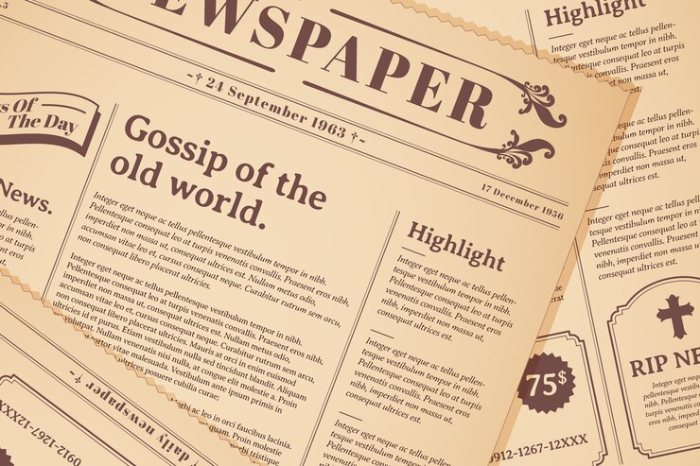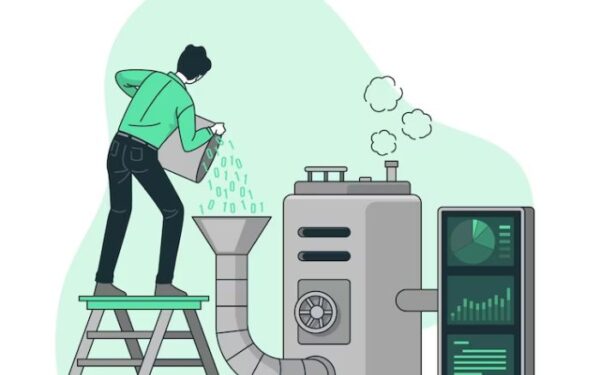Uncovering the Past: How Historical Newspapers Provide Insight

Historical newspapers offer a glimpse into a period and are helpful primary sources for historical research. They often reflect social attitudes and culture.
They are also a rich source for learning how to analyze a document. Historians must consider context, content, and style. They must look at what was included and what was left out.
Historical Insight
Until recently, historians treated historical newspaper content like country cousins or scullery maids. Historians have traditionally consulted newspapers for political events or to learn about long-term trends. However, some historians have needed help with the reliability of newspaper evidence.
Delving into genealogy often involves exploring historical newspapers, valuable resources that offer firsthand accounts and details about ancestors’ lives, providing a glimpse into the past.
Researchers and students can uncover different perspectives on historical turning points and how the news was presented using various resources, including America’s Historical Newspapers. In addition, the collection provides insight into how journalists interpreted social issues of their day. Sex and sensationalism with solid touches of bigotry were common ingredients in a newspaper’s editorial mix.
As a result, today’s students who study a historical turning point can read and interpret actual news reports to see how the events unfolded in real time. For example, students studying the Red Summer of 1919 in the United States can use America’s Historical Newspapers to understand the immediate nature of the events and how newspapers provided multiple views on the unfolding event.
Students can also explore the use of language in a period’s society by reviewing obituaries or editorial cartoons, or they can investigate how newspaper layout and design influence how news is perceived and presented.
Turning Points in History
A turning point is put where motion in one direction ends, and movement in another begins. In humans, this can be a personal decision that has a lasting impact or a political choice made by a nation that affects millions. In either case, a turning point has repercussions that are clear in retrospect.
Martin Luther nailing his Ninety-Five Theses to the door of Wittenberg Cathedral in 1517, the Renaissance, the battles at Trafalgar and Waterloo a century later, the First World War, and more are examples of historical turning points. However, a turning point can be slippery and largely a matter of interpretation and framing events at a given time.
As archives digitize their content, they must consider how they can best make these historical documents accessible to students and scholars. In many cases, Optical Character Recognition (OCR) is used to convert scanned pages into searchable text. However, these OCR processes produce inconsistent results and may need to be revised for older texts. Moreover, older texts often suffer from imperfections that cannot be corrected, such as faded print, shaded backgrounds, fragmented or touching letters, overlapping text, and the “gutter shadow” effect caused by binding two pages together.
Community Issues
A historical newspaper is the perfect way to explore community issues. Community issues are problems, challenges, and risks that affect the people in a place, whether it is a city, neighborhood, or town. Historical newspapers provide valuable insight into how these issues shaped the past and can be used to understand current trends.
Modern newspaper archives undergo a process that ensures that they meet preservation standards. This ensures that the images are easily readable by humans and computers. However, many older newspapers were preserved in physical depositories and subjected to neglect and abuse, making them illegible. Historical newspaper archives are designed to protect these documents for future research, but the optical character recognition (OCR) technology used to digitize them needs to be more accurate and recognize the text accurately.
America’s Historical Newspapers enables students to search historical newspaper content that can be directly correlated to state educational standards. This primary source material instantly makes history more relevant to students and can provide a unique perspective that enhances textbook lessons in social studies, history, English, civics, science, and more.
Social Issues
Historic newspapers provide a window into the past and reflect on society’s values, beliefs, and attitudes at specific historical moments. As such, they are crucial to studying journalism history and, more generally, to cultural memory.
With the ability to browse and search a vast collection of historical newspapers, students can learn more about bygone eras, including the Colonial Era, westward expansion, the Civil War, Reconstruction, industrialization, and much more. They can also uncover a wide range of social issues, from the rise of women’s rights to the impact of immigration on local communities.
However, these digitized newspaper collections are only helpful to historians if they are easy to use. Late and Kumpulainen analyzed how scholars interact with historical newspapers and found that barriers occur throughout the research process. Using a task-based information interaction framework, their analysis revealed that barriers occurred at both context level and activity type.
These barriers include a variety of concerns, such as the quality of image surrogates and textual data and problems with the socio-organizational setting. A better understanding of these barriers could help to improve access to historical newspaper content.
Politics
The political content of historical newspapers is rich and varied, covering a wide range of topics. The articles can reveal attitudes toward government, military and political events, social and cultural issues, and societal discoveries or developments.
During the nineteenth century, working-class newspapers flourished in many cities, providing alternative views to mainstream journalism and society. Thousands of independent, utopian, and socialist papers circulated until anti-sedition laws suppressed radical leftist publications. Labor union papers also grew in popularity.
These digitized newspaper archives provide an unparalleled view of history. Each digitized collection contains the full-text content of each day’s newspaper and includes advertisements, editorial cartoons, classified ads, obituaries, and more in easy-to-use PDF format.
The archived articles are invaluable for understanding how the newspaper industry functions. The study of the archival process and of how archives – both physical and digital – shape our perceptions of history is known as media archaeology. This approach combines elements of Foucault’s notion of the apparatus with a knowledge of media production to identify and understand the network of humans, machines, and institutions that create archived records, thereby shaping our historical understanding of the past.





